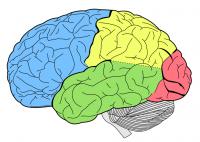WUT graduate who captured the brain in an atlas
Author of over 500 publications, he has several dozen patent applications and 15 patents granted in the United States and 8 in the European Union to his credit. But his most outstanding accomplishment is 35 brain atlases developed with his team. This is what has earned Prof. Wiesław Nowiński a worldwide renown.
Read more in the new article in the Business – Innovations – Technology series.
Despite no formal medical qualification, as a scientist, he explores medical issues. He graduated in the field of Electronics from Warsaw University of Technology, then he was awarded a doctoral degree from Lodz University of Technology and then the habilitation qualification from the Polish Academy of Sciences. In 1991, he left for Singapore. That was where he worked on his major projects, the brain atlases.
Four years of work
“At one point, I realized that although I used many printed atlases and had transposed them into 3D models, they were still limited as they failed to capture a sufficient number of structures and had poor scalability, and lacked precision,” explained Prof. Nowiński interviewed by Karol Jałochowski for the “Polityka” weekly. “So I started looking for new material.”
Upon arrival to Singapore, the scientist persuaded the team he was assigned to (dedicated to visual modeling) to build an alliance with the medical industry. He himself started to travel the world to talk to doctors and observe neurosurgeons at work. To create a brain atlas, he needed the knowledge and... a brain that he could explore, examine and scan. Eventually, he decided to use his own one.
It took Prof. Nowiński about 4 years to develop his first brain atlas. Only the analysis of approx. 1,500 images consumed a year of work. The scientist had to manually label all structures visible in those images. It was a tedious job, requiring a painstaking attention to detail. But, importantly, the reward was worth the effort. Released in 1997, the first atlas became a bestseller. And publications of further instalments were received with great interest and acclaim.
Brain of reference
Today, Prof. Nowiński’s atlases are used all over the world. They are applied in neurosurgery, neuroradiology, neurology and brain mapping. They are a valuable tool for healthcare professionals and a treasure trove of knowledge for students.
“From the medical perspective, the first application was for the Parkinson’s disease,” the scientist told Kamil Turecki on “Ustalmy Jedno – Świat”, a current affairs show. “The atlas has much better resolution than any other forms of scanning. For example, this helps track the treatment process.”
Prof. Nowiński’s projects help patients after brain strokes. All this is possible because the atlases enable to see what parts of the brain have been irreversibly damaged and what parts are susceptible. The maps also provide the basis for simulating various neurological disorders. They are used in epilepsy, pain and mental disease treatment. “In neurosciences, the atlas is the brain of reference,” emphasized Prof. Nowiński interviewed by Anna Ronij for the Polish Press Agency.
The contributions of the Warsaw University of Technology graduate have reached about 100 countries. They have been licensed for use to 67 companies and institutions. Prof. Nowiński has been awarded several dozen prizes and honorable mentions for them, including from the leading medical societies.
“I feel fulfilled; if my atlases can help thousands of doctors and every doctor can help thousands of patients, this is my greatest satisfaction and motivation for continuous effort,” he told Anna Ronij.
After many years of work in Singapore, the scientist returned home. In December 2015, he accepted tenure at Cardinal Wyszyński University in Warsaw. He insists that he would wish for better opportunities for working on innovative projects in Poland. He is talking about setting up a Polish Silicon Valley.
Agnieszka Kapela
Promotion and Information Office
_____________________
Sources:
Urszula Ludwiczak, Zeskanował swój mózg. I stworzył atlas głowy [Scanned his own brain. And created a brain atlas], http://www.wspolczesna.pl/magazyn/a/zeskanowal-swoj-mozg-i-stworzyl-atlas-glowy,10040636/, Accessed: 19 October 2017
Kamil Turecki, Prof. Wiesław Nowiński w „Ustalmy Jedno – Świat” [Prof. Wiesław Nowiński on “Ustalmy Jedno – Świat” show], http://wiadomosci.onet.pl/tylko-w-onecie/prof-wieslaw-nowinski-w-ustalmy-jedno-swiat/eqtmz0, Accessed: 19 October 2017
Laureaci III edycji „Wybitny Polak” [Winners of the 3rd Outstanding Pole competition], http://www.terazpolska.pl/pl/Laureaci-III-edycji, Accessed: 19 October 2017
Badania nad mózgiem in silico ruszają na UKSW [In silico brain research to launch at UKSW],http://naukawpolsce.pap.pl/aktualnosci/news,408745,badania-nad-mozgiem-in-silico-ruszaja-na-uksw.html, Accessed: 19 October 2017
Polski wizjoner – obywatel świata – prof. Wiesław Nowiński [Polish visionary – citizen of the world – Prof. Wiesław Nowiński], interview by Anna Ronij, as in: http://www.gazetagazeta.com/2014/08/polski-wizjoner-obywatel-swiata-prof-wieslaw-nowinski/, Accessed: 19 October 2017
Prof. Nowiński: wracam, aby budować Polskę innowacyjną [Prof. Nowiński: I’m back to build an innovative Poland], interview by Ewelina Krajczyńska, http://naukawpolsce.pap.pl/aktualnosci/news,407228,prof-nowinski-wracam-aby-budowac-polske-innowacyjna.html, Accessed: 19 October 2017
Prof. Wiesław Nowiński’s website at:http://www.wieslawnowinski.com/, Accessed: 19 October 2017
Wiesław Nowiński: Mózg dla każdego [Wiesław Nowiński: Brain for dummies], produced by: Karol Jałochowski,https://www.youtube.com/watch?v=te83IV0FHAA, Accessed: 19 October 2017








